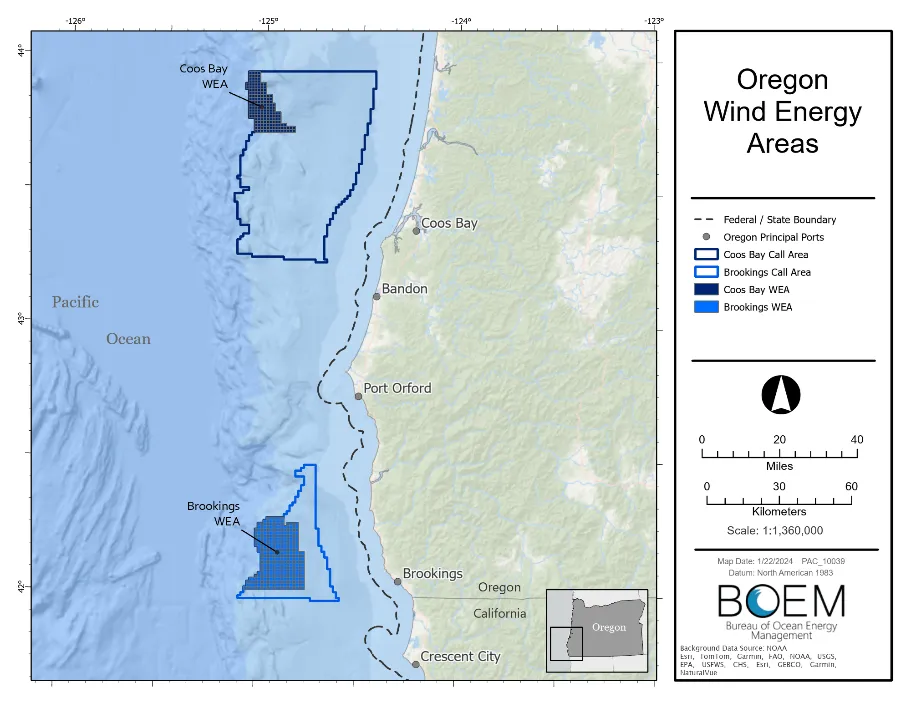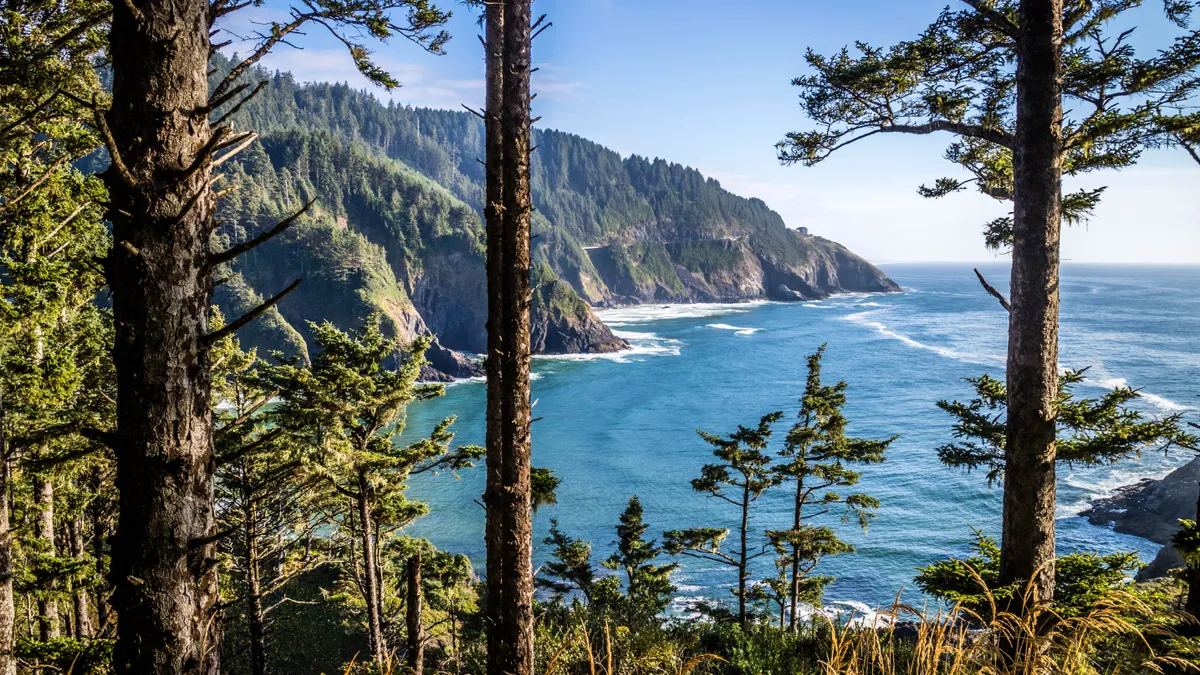The Bureau of Ocean Energy Management announced Tuesday that it has made two final wind energy area, or WEA, designations offshore Oregon, totaling around 195,012 acres and offering up to 2.4 GW of potential capacity.
The Brookings WEA near the coast of Oregon and California totals around 133,808 acres and is around 18 miles from shore, while the Coos Bay WEA further north totals 61,204 acres and is 32 miles from shore.
The Coos Bay call area was significantly larger than the Brookings call area initially, but the Department of Defense “identified 570,053 acres in the Coos Bay Call Area that conflict with national security,” which “reduced the Coos Bay Call Area by 65.3%,” BOEM said in a report on the finalization of the WEAs.

The WEAs also avoid 98% of the areas that the National Marine Fisheries Service and the Oregon Department of Fish and Wildlife recommended for exclusion “due to their importance as commercial fishing grounds,” BOEM said in a release.
BOEM’s pursuit of offshore wind development in Oregon has been questioned by Oregon lawmakers and Gov. Tina Kotek, D, who sent a letter last June to BOEM Director Elizabeth Klein asking for a pause in the process so that a more in-depth consultation of ocean users could take place.
Though BOEM sought stakeholder feedback throughout the process and worked with the National Oceanic and Atmospheric Administration’s National Centers for Coastal Ocean Science to identify environmental and ocean co-use impacts, the Midwater Trawlers Cooperative and the Confederated Tribes of the Coos, Lower Umpqua, and Siuslaw Indians, or Tribe, expressed unhappiness with the final WEA designations.
The Tribe said it is “extremely disappointed” with BOEM’s decision and said the agency “waited until the eleventh hour” to notify it of the finalization. Heather Mann, Director of the Midwater Trawlers Cooperative, said the designations were a “slap in the face” to the group, which wanted to see more significant alterations to the WEAs from the initially proposed draft versions.
Clean energy groups like the American Clean Power Association, or ACP, praised the designation — calling it a first step for the state to meet its “ambitious” goal of bringing 3 GW of offshore wind power online by 2030.
“Designating commercially suitable, environmentally sound areas of the Pacific Ocean for offshore wind energy moves the region one step closer to a clean energy future. We applaud BOEM for listening carefully to Oregonians while ensuring that Oregon offshore wind can be responsibly developed,” said the ACP’s Vice President for Offshore Wind Anne Reynolds.
BOEM published a notice of intent to prepare an environmental assessment for the areas in the Federal Register on Wednesday, opening a comment period that will close March 15.
“BOEM seeks public input regarding important environmental issues and the identification of reasonable alternatives that should be considered in the EA,” the notice said. “BOEM will assess the environmental impacts of any proposed wind energy projects after a lease is issued and before deciding whether or not to approve any lessee's construction and operations plan.”














